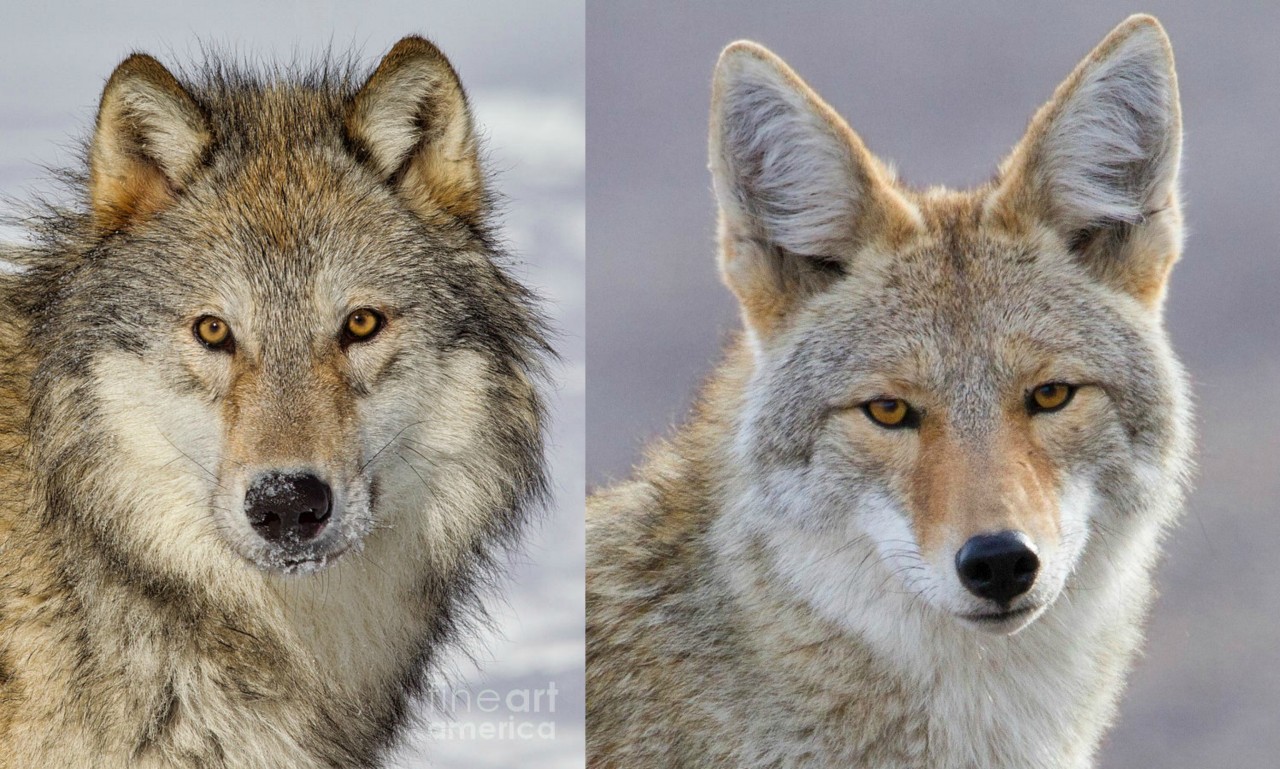

In general, coyotes also tend to bark a lot. Their howls range from short, mid-pitched tones to higher-pitched barks that often sounds like a scream or a high-pitched human laugh.

This sound is also similar to the sound of a playful pack of terriers. Upon close observation, you’d notice that coyotes tend to make high-pitched howls, barks, and yelps. The howls of coyotes and wolves are entirely different. Differences In Sounds of Wolves and Coyotes?
#WOLF VS COYOTE FULL#
If you would like more details on what a coyote eats, I have written a full article, which you can find here. These species also prey on domesticated livestock and will feed on already killed animals when a new meat source is no longer available. For secondary food, they prefer beaver, hare, other small mammals, and birds. Gray wolves, found along with the US’s continental parts, survive on massive, hooved mammals like elk, buffalos, deer, and even moose. Unlike coyotes, who thrive on both meat and vegetation, wolves are entirely meat-eaters. Since they also have black molars with a huge chewing surface, it is simpler to thrive on fruit, insects, and grass. Most coyotes eat a meal of rabbits, mice, rats, and other small mammals. However, unlike wolves, they thrive and survive on smaller animals.

As coyotes inhabit areas with human settlement proves that they are more adaptable in terms of food.Ĭoyotes are carnivores and therefore eat meat. There are many differences in the food habits of wolves and coyotes. Wolves are not usually seen around people as they prefer staying in the forest covers.ĭo you know if coyotes can swim? Find out here Differences In Diet Between Coyotes and Wolves? They have also adapted themselves to be comfortable around people because they are likely to find a constant food source. Coyotes have adapted to live in forests, urban environments, suburbs, and lush meadows, despite being native to the prairies. The most significant difference between wolves and coyotes lies in their habitat and interaction with humans. Whilst coyotes have slender and angular snouts, both red and grey wolves tend to have broader noses. The third significant difference lies in the snout of a wolf or coyote. How do coyotes protect themselves from predators? Find out here SnoutĬoyote (left) have longer, thinner noses than wolves (right).

Their bodies can also have several yellow and white patches, with these patches being most apparent on their limbs, face, and chest. Red wolves have intricate, reddish-brown fur. Most grey wolves have dark gray to black hair. While gray wolves do feature pale grey fur, their fur tends to be on the darker side. The fur of the coyote tends to brown and pale yellow. CoatĪ difference in these species can be identified from the coloration on their coat. They have a more streamlined body than that of wolves. In addition to the weight, coyotes also tend to be nimble when compared to wolves. Red wolves are equally large, with a weight of 100 pounds. While coyotes have an average weight of 25 to 45 pounds, gray wolves range from 50 to 100 pounds.


 0 kommentar(er)
0 kommentar(er)
